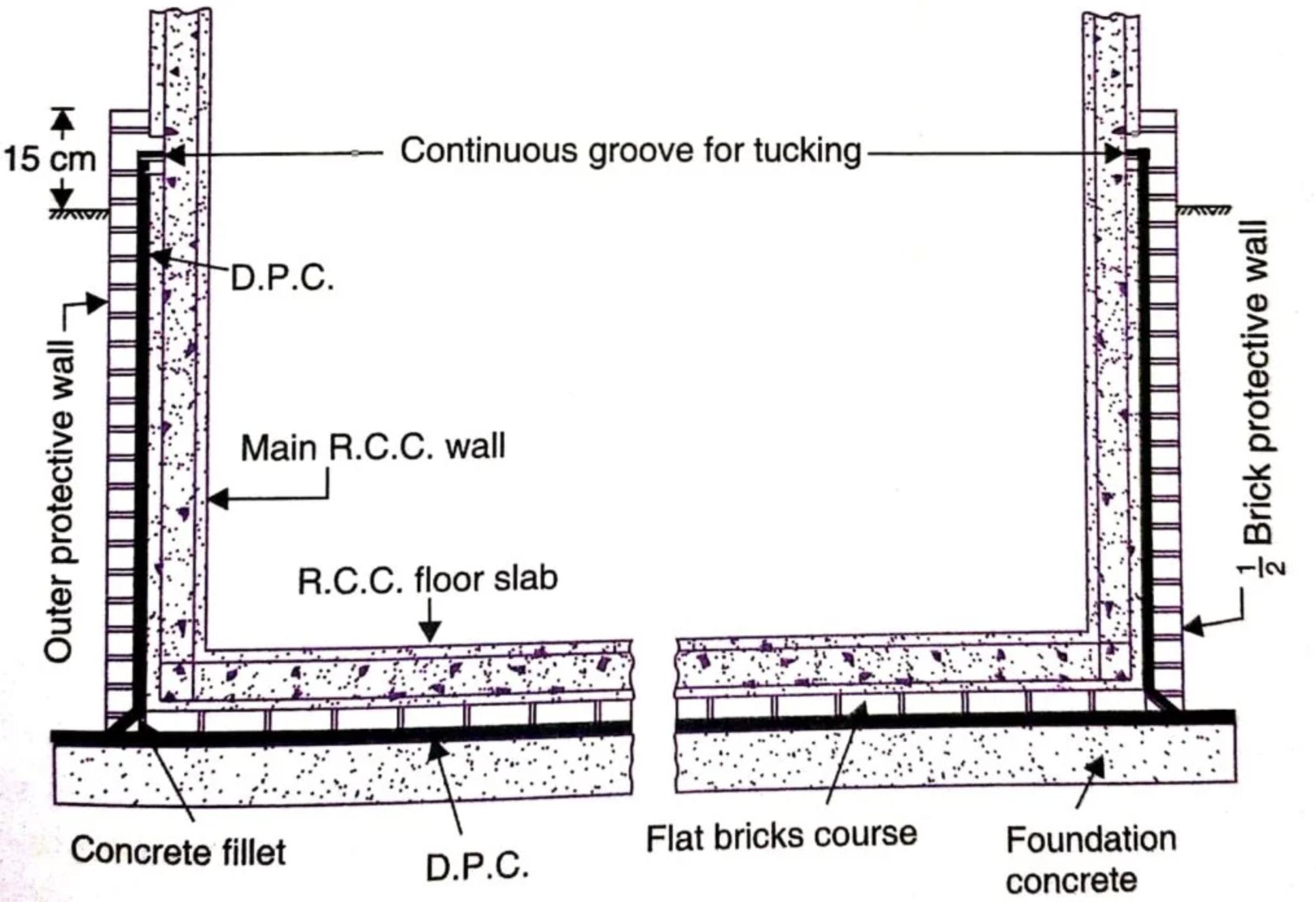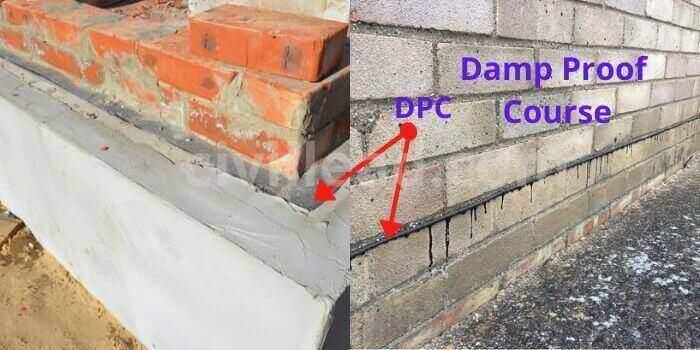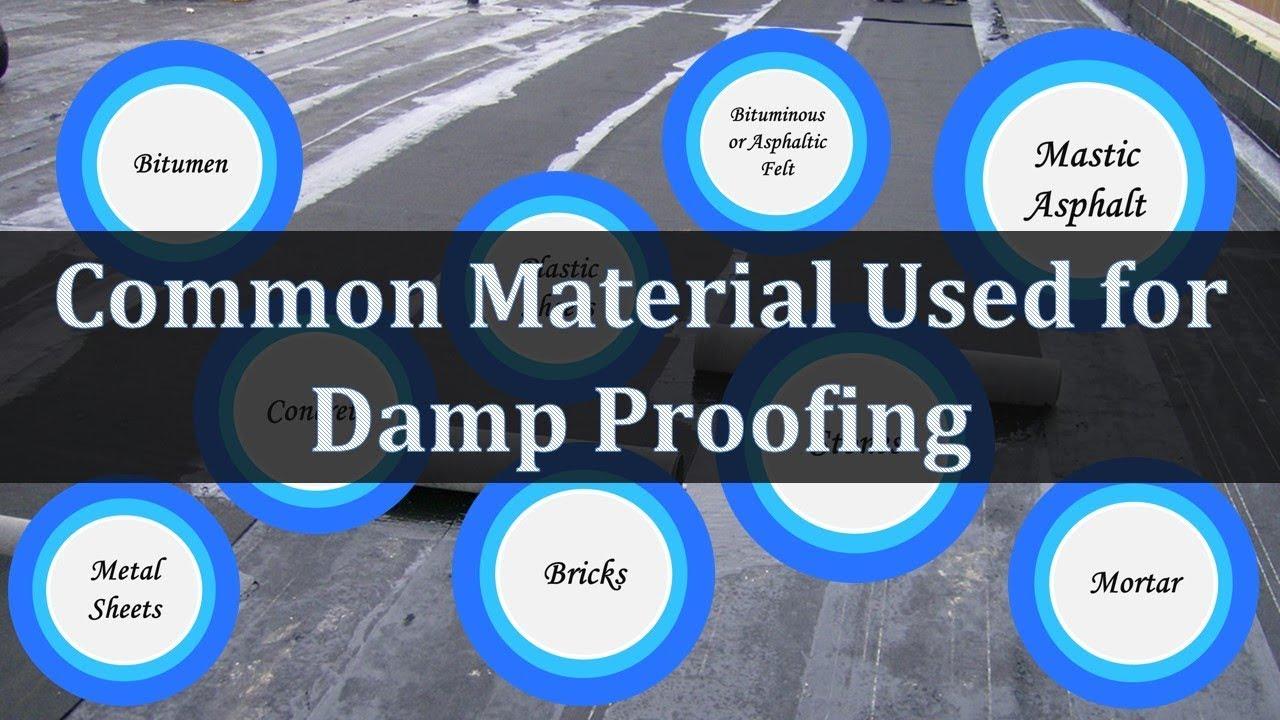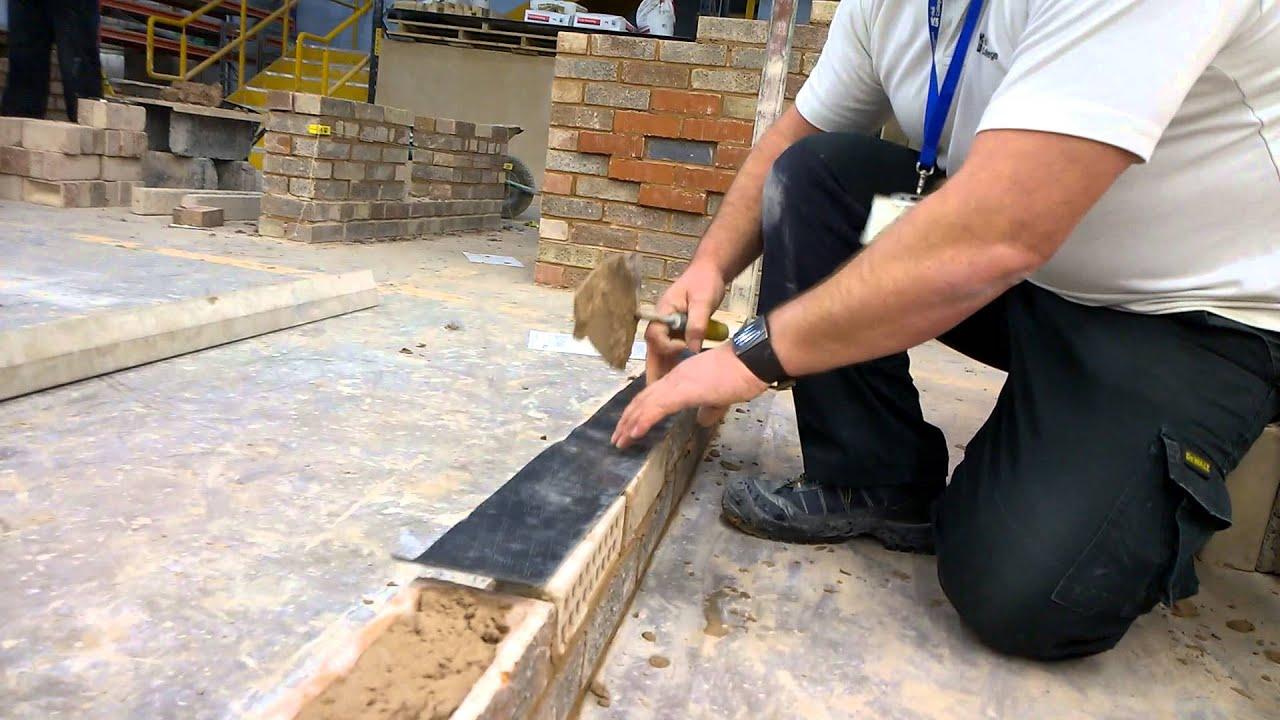



Table of Contents
- Introduction
- Understanding Damp Proof Course (DPC) in Construction
- Importance of DPC in Building Structures
- Materials Used in DPC Construction
- Methods of DPC Installation
- Factors to Consider During DPC Construction
- Common Issues and Solutions in DPC Implementation
- Advances in DPC Technology
- Conclusion
- Faq's
Introduction
Dampness is a pervasive issue in construction, leading to structural deterioration, health hazards, and aesthetic concerns. To combat this, the Damp Proof Course (DPC) is a fundamental component in building design and construction. This comprehensive guide delves into the intricacies of DPC construction, exploring its significance, materials, methods, and essential considerations to ensure robust and moisture-resistant structures.
Understanding Damp Proof Course (DPC) in Construction
A Damp Proof Course (DPC) is a fundamental component in modern construction, designed to prevent moisture from seeping into building structures through capillary action. This phenomenon, commonly referred to as rising damp, occurs when groundwater moves upward through porous building materials such as bricks, mortar, and concrete. Without an effective DPC, moisture can infiltrate walls and floors, leading to structural weakening, peeling paint, damp patches, and even hazardous mold growth. By creating a barrier at critical junctions in a building, DPC not only enhances the durability of the structure but also protects interior finishes and furnishings from moisture-related damage.
 Understanding DPC, Cement Concrete
Understanding DPC, Cement Concrete
In addition to preserving a building's structural integrity, an effective DPC system plays a vital role in ensuring healthy indoor air quality. Excess moisture within walls and floors can create an ideal environment for mold, mildew, and harmful bacteria to thrive, posing serious health risks such as respiratory issues and allergies. Furthermore, damp conditions can accelerate the deterioration of building materials, leading to costly repairs and maintenance over time. By incorporating a properly designed and installed DPC, property owners and builders can significantly prolong the lifespan of a structure, reduce maintenance expenses, and maintain a comfortable and safe living or working environment.
Importance of DPC in Building Structures
 Importance of DPC in Building Structures, Civil Lead
Importance of DPC in Building Structures, Civil Lead
The integration of an effective DPC system is paramount for several reasons:
Structural Integrity
A Damp Proof Course (DPC) is crucial for maintaining the structural strength of a building by preventing moisture infiltration. When water seeps into construction materials like bricks, concrete, and mortar, it gradually weakens their bonding properties, making them prone to cracks, erosion, and eventual structural failure. Over time, unchecked moisture can lead to subsidence, foundation damage, and compromised load-bearing capacity, posing serious safety risks. By installing an effective DPC, the structure remains stable and durable, reducing the chances of costly renovations or even complete rebuilding due to moisture-related damage.
Health and Safety
Damp environments create an ideal breeding ground for mold, mildew, and harmful bacteria, which can severely affect indoor air quality and human health. Exposure to mold spores has been linked to respiratory infections, allergies, asthma, and other serious health issues, particularly in children, elderly individuals, and those with weakened immune systems. Additionally, excess moisture can lead to a musty odor and condensation, making living or working conditions uncomfortable. A properly installed DPC helps maintain optimal indoor humidity levels, creating a healthier, safer, and more comfortable environment for occupants.
Aesthetic Preservation
Moisture ingress can have a detrimental impact on a building's visual appeal, leading to unsightly damp patches, peeling paint, discolored walls, and salt efflorescence on surfaces. Over time, damp conditions can cause plaster and woodwork to deteriorate, making interiors look neglected and outdated. In commercial and residential buildings alike, poor aesthetics due to damp issues can lower property value and reduce tenant or buyer interest. By implementing an effective DPC, moisture-related aesthetic damage can be avoided, ensuring that the building retains its pristine appearance and market value over the years.
Economic Efficiency
Water damage can result in frequent and expensive maintenance, including wall repairs, repainting, mold removal, and replacing weakened structural components. If left unchecked, severe moisture issues can require major renovations or even demolition, leading to substantial financial losses. Installing a reliable DPC system is a cost-effective long-term solution, as it significantly reduces the need for repairs and maintenance, preserving both the building's lifespan and the owner's investment. In the long run, preventing moisture problems at the construction stage through DPC is far more economical than dealing with costly repairs after damage has already occurred.
Also Read: Abutments in Construction Projects: Types, Functions, Design Considerations and More
Materials Used in DPC Construction
 Materials used in DPC, Youtube
Materials used in DPC, Youtube
Selecting appropriate materials for DPC is critical to its effectiveness. The choice depends on factors such as building design, environmental conditions, and specific project requirements. Common materials include:
Bituminous Membranes
Bituminous membranes are among the most widely used materials for DPC due to their exceptional waterproofing properties. These membranes are made from asphalt or bitumen, often reinforced with polymers to enhance flexibility and durability. Their high resistance to moisture penetration makes them ideal for various construction applications, including walls, foundations, and basements. Additionally, bituminous membranes can be easily applied in sheet or liquid form, ensuring seamless coverage and long-term protection against rising damp.
Polyethylene Sheets
Polyethylene sheets offer a cost-effective and efficient solution for damp-proofing in construction. Made from high-density plastic, these sheets are lightweight, flexible, and resistant to chemicals, making them an easy-to-install option for preventing moisture ingress. They are particularly popular in residential and commercial buildings, where a quick and economical damp-proofing solution is required. However, care must be taken to ensure that the sheets are properly sealed and overlapped to prevent gaps that could allow moisture to pass through.
Metal Sheets
Metal sheets, such as those made from lead, copper, or aluminum, serve as a strong and durable DPC option. These materials provide excellent moisture resistance and longevity, making them suitable for high-end construction projects. However, the effectiveness of metal DPC largely depends on proper installation, as poorly fitted sheets can lead to gaps and weaknesses in the barrier. Additionally, corrosion resistance must be considered, particularly in environments with high humidity or exposure to aggressive chemicals. Protective coatings or alloying metals can be used to enhance the longevity of metal DPC installations.
Cementitious Compounds
Cementitious DPC is a rigid and highly durable solution, commonly used in foundations, basements, and water-retaining structures. This type of DPC is created by incorporating waterproofing additives into cement or mortar, forming a solid, impermeable layer within the building. Unlike flexible materials, cementitious compounds provide a structural damp-proofing solution, effectively blocking water penetration. However, they require proper curing and application to prevent cracking, which could compromise the effectiveness of the barrier.
Mastic Asphalt
Mastic asphalt is a semi-rigid, highly durable material used for DPC, particularly in floors, roofs, and basements. Composed of bitumen and fine aggregates, it forms a continuous, seamless layer that effectively prevents moisture ingress. One of its biggest advantages is its self-healing property, where minor cracks can be sealed due to the material's inherent flexibility. Additionally, mastic asphalt is resistant to wear and tear, making it an excellent choice for high-traffic areas in both residential and commercial buildings. However, proper application is crucial, as improper mixing or laying can lead to uneven surfaces and potential weaknesses in the waterproofing layer.
Also Read: Cedar Wood for Construction and Furniture: Benefits You Can't Ignore
Methods of DPC Installation
 Methods of DPC Installation, Youtube
Methods of DPC Installation, Youtube
The installation of DPC must be meticulously planned and executed to ensure its effectiveness. Common methods include:
Horizontal DPC
Horizontal DPC is a primary method used to prevent rising damp in buildings. It is installed at the base of walls, typically just above ground level, forming a continuous barrier that stops moisture from moving upward through the structure. Common materials used for horizontal DPC include bituminous sheets, polyethylene membranes, and cementitious coatings. Proper lapping and joint sealing are crucial to ensure there are no gaps that could allow moisture penetration. This method is especially effective in residential and commercial buildings, where ground moisture poses a significant threat to wall durability and indoor air quality.
Vertical DPC
Vertical DPC is designed to prevent lateral moisture penetration in basements, retaining walls, and exposed external surfaces. It is often installed alongside horizontal DPC to create a comprehensive damp-proofing system. The materials used for vertical DPC include bituminous coatings, waterproof cementitious slurries, and polymer-based sealants. Proper application is essential to ensure the continuity of the moisture barrier, especially at wall junctions and around structural openings like windows and doors. Vertical DPC is particularly important in areas with high rainfall or groundwater levels, where water infiltration can cause serious structural damage over time.
Chemical DPC
Chemical DPC is a modern and cost-effective solution, primarily used in remedial works where an existing structure lacks an adequate physical DPC. This method involves injecting water-repellent silicone-based chemicals into drilled holes within the walls. These chemicals penetrate the brickwork and mortar, forming a barrier that repels moisture. Chemical DPC is particularly beneficial for historic or old buildings, where installing a physical DPC may not be feasible. While it is an effective solution, its success depends on proper application, correct dosage, and even distribution throughout the treated area.
Integral DPC
Integral DPC is a preventative approach that involves adding waterproofing compounds directly to the concrete mix during construction. This ensures that the entire structure itself is moisture-resistant, rather than relying on a separate layer of protection. Integral DPC is commonly used in basements, water tanks, and underground structures, where prolonged exposure to moisture is a concern. Special waterproofing admixtures, such as crystalline additives or hydrophobic agents, enhance the natural resistance of concrete, providing a long-lasting and maintenance-free damp-proofing solution.
Cavity Wall Construction
Cavity wall construction is a highly effective method of damp-proofing that involves creating a gap (cavity) between the inner and outer walls of a building. This cavity acts as a buffer zone, preventing moisture from transferring from the external brickwork to the internal structure. To further enhance protection, DPC membranes or coatings are placed within the cavity at key points, such as the base of the wall, windowsills, and doorways. This method is commonly used in modern buildings, offering both moisture resistance and improved thermal insulation, making it a practical and energy-efficient construction technique.
Also Read: Retaining Walls: A Complete Guide to Design, Construction, and Costs
Factors to Consider During DPC Construction
Ensuring the effectiveness of DPC involves careful consideration of various factors:
Material Compatibility
Choosing the right DPC material is essential to ensure its effectiveness and longevity. The selected material must be compatible with the surrounding construction materials to avoid chemical reactions, adhesion issues, or deterioration over time. For example, some bituminous-based DPC materials may not bond well with alkaline surfaces like fresh concrete, leading to potential separation and water ingress. Similarly, metal sheets such as lead or aluminum should be installed with care to prevent corrosion when in contact with certain mortars or damp environments. Ensuring compatibility between DPC materials and adjacent building components helps maintain an uninterrupted moisture barrier, preventing failures due to material degradation.
Environmental Conditions
The local climate and soil conditions play a crucial role in selecting the most effective DPC solution. In areas with high groundwater levels or heavy rainfall, a strong, water-resistant DPC such as bituminous membranes, polyethylene sheets, or chemical injections is required to withstand constant exposure to moisture. Similarly, regions with extreme temperature variations need DPC materials that can expand and contract without cracking, ensuring long-term durability. Additionally, buildings exposed to aggressive chemicals, salt-laden air, or industrial pollutants should incorporate corrosion-resistant and chemically inert DPC materials to prevent premature degradation.
Building Design
The architectural layout of a building influences the placement, type, and effectiveness of the DPC. Structural factors such as wall thickness, the presence of cavities, foundation depth, and load-bearing requirements determine which DPC method is most suitable. For example, buildings with cavity walls require properly positioned DPC membranes to prevent moisture transfer between layers. Additionally, in multi-story buildings, the continuity of the DPC layer across different levels and junctions is essential to ensure comprehensive damp-proofing. Properly integrating DPC within the overall building design prevents moisture-related structural weaknesses in the long run.
Installation Quality
The correct installation of DPC is as important as the quality of the material itself. A poorly installed DPC can result in gaps, overlaps, or breaches that allow moisture to bypass the barrier. To ensure maximum effectiveness, the DPC must be continuously laid without breaks, properly lapped at joints, and positioned at the correct height above ground level. Installation must also comply with building codes and manufacturer guidelines, ensuring it meets moisture resistance standards. Employing skilled professionals, conducting quality checks, and using advanced techniques like self-adhesive membranes or chemical DPC injections can significantly enhance the durability and efficiency of the damp-proofing system.
Maintenance and Inspection
Even the best DPC systems can deteriorate over time due to natural wear and tear, structural shifts, or accidental damage. Regular inspections and proactive maintenance help detect early signs of moisture intrusion, such as damp patches, mold growth, or efflorescence on walls. Timely interventions, such as repairing damaged sections, reapplying chemical DPC, or reinforcing weak points, can extend the lifespan of the damp-proofing system. Buildings, particularly in high-moisture environments, should have scheduled DPC assessments to ensure continued protection and prevent expensive structural repairs in the future.
Common Issues and Solutions in DPC Implementation
Despite careful planning, challenges in DPC implementation can arise:
Bridging of DPC
Bridging of DPC occurs when debris, mortar droppings, or unintentional structural elements create a direct path over the damp-proof course, allowing moisture to bypass the barrier. This compromises the effectiveness of the DPC and can lead to rising damp within walls. To prevent bridging, it is essential to maintain clean construction practices, ensuring that mortar and debris are removed from DPC layers during and after installation. Regular site inspections and quality control measures can help identify potential bridging issues early, preventing costly remedial work in the future. Proper alignment and spacing of the DPC layer should also be maintained to ensure uninterrupted moisture protection.
DPC Damage
Physical damage to the DPC can occur during construction, renovations, or retrofitting, leading to breaches in the moisture barrier. Common causes of damage include accidental punctures, cuts, or compression from heavy construction materials. Once damaged, a DPC loses its ability to prevent moisture ingress, resulting in damp issues and potential structural deterioration. To avoid such damage, clear communication between construction teams is crucial, ensuring that workers understand the importance of protecting the DPC layer. Temporary barriers or protective coverings should be used in high-risk areas, and post-installation inspections must be conducted to check for any breaches before further construction continues.
Inadequate Coverage
Inadequate coverage of the DPC can result from poor installation practices, incorrect material overlap, or misalignment of damp-proof membranes. If the DPC is not properly lapped or sealed, moisture can find its way through gaps, rendering the barrier ineffective. To ensure comprehensive protection, construction teams must follow strict adherence to installation guidelines, ensuring that DPC sheets overlap by at least 100mm and are properly sealed to prevent leaks. Additionally, conducting thorough inspections and water penetration tests after installation helps confirm that there are no exposed areas or weak spots that could compromise the damp-proofing system.
Advances in DPC Technology
The construction industry continues to evolve, introducing innovative solutions for damp proofing:
Self-Adhesive Membranes
Self-adhesive membranes represent a modern and efficient advancement in DPC technology, offering ease of installation while eliminating the need for additional bonding agents. These membranes come with a pre-applied adhesive layer, ensuring a strong and consistent bond to surfaces without requiring external heat or chemical bonding. This not only reduces labor costs but also minimizes the risk of improper adhesion, which is a common issue in traditional DPC installations. Additionally, self-adhesive membranes provide seamless coverage, reducing the likelihood of moisture penetration at joint areas. Their flexibility and high resistance to environmental factors make them an ideal choice for modern construction projects.
Nanotechnology-Based Coatings
The integration of nanotechnology in damp-proofing has significantly enhanced the effectiveness and longevity of DPC systems. Nanotechnology-based coatings use microscopic particles to create a water-repellent barrier that deeply penetrates construction materials, preventing moisture ingress while maintaining breathability. These coatings are particularly useful for historic buildings, porous masonry, and surfaces exposed to harsh weather conditions. Unlike traditional waterproofing methods, nanotechnology coatings offer superior adhesion, durability, and resistance to UV exposure and chemical degradation, ensuring long-term protection with minimal maintenance.
Smart Moisture Sensors
The introduction of smart moisture sensors into DPC systems has revolutionized damp-proofing by enabling real-time monitoring of moisture levels within building structures. These sensors detect early signs of moisture intrusion, allowing for proactive maintenance and timely repairs before serious structural damage occurs. Smart sensors can be integrated into new or existing DPC installations, sending alerts to building management systems or mobile apps whenever abnormal moisture levels are detected. This technology is especially beneficial in large-scale commercial buildings, underground structures, and heritage conservation projects, where long-term damp-proofing management is critical.
Conclusion
Incorporating an effective Damp Proof Course (DPC) system is essential for safeguarding buildings against moisture-related damage. By selecting the right materials, employing suitable installation methods, and adhering to best construction practices, builders can ensure long-lasting structural integrity and occupant comfort. As advancements in DPC technology continue to emerge, modern solutions provide enhanced protection, making damp-proofing more efficient and reliable than ever before. Regular inspections and proactive maintenance further reinforce the effectiveness of DPC, preventing costly repairs and preserving the aesthetic and functional value of structures.
explore further
Latest from Contemporary ideas
More from Innovations
Resources
Dwello, for every home buyer, is a way to go from 'I feel' to 'I know', at no extra cost.




